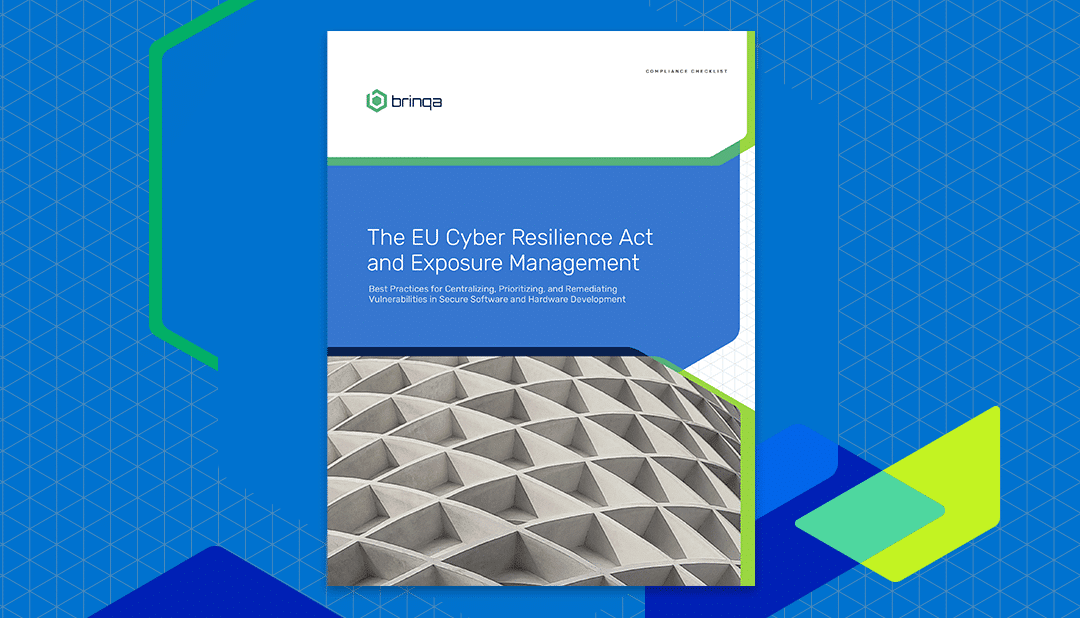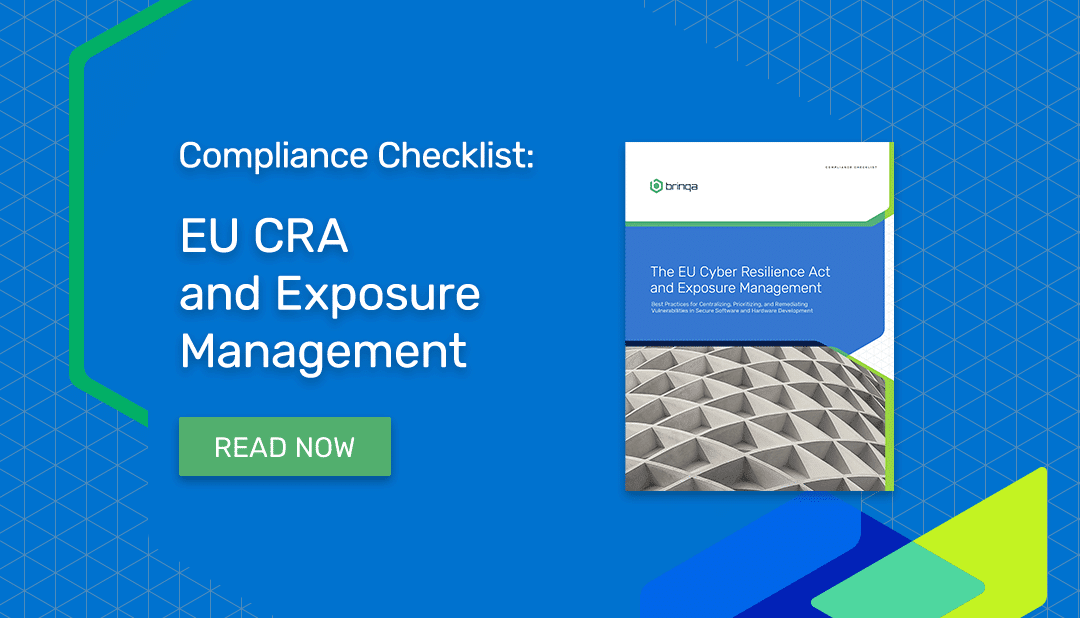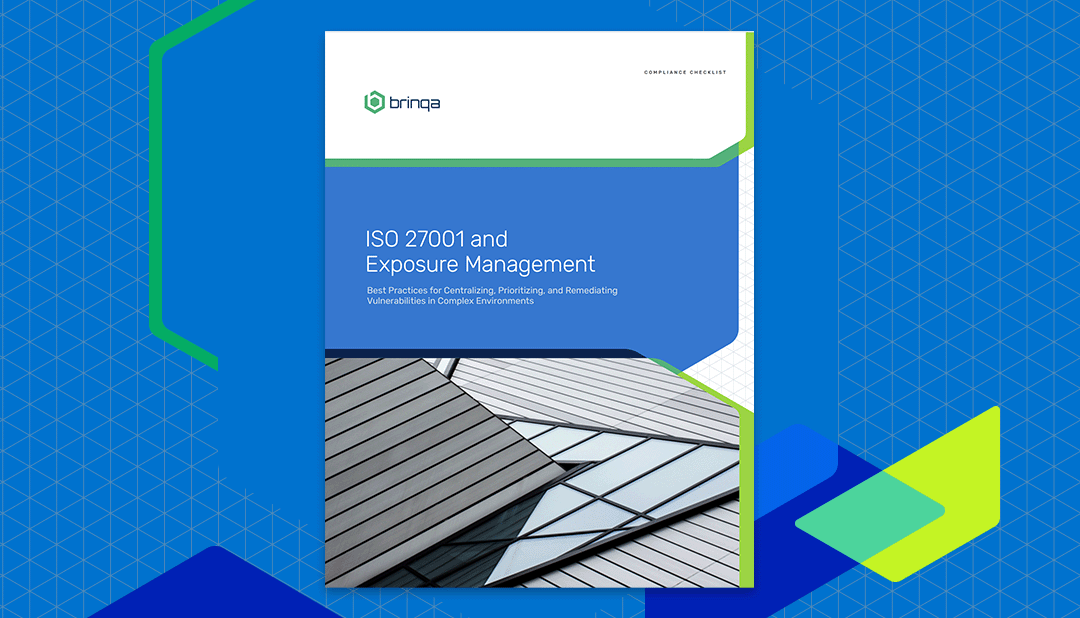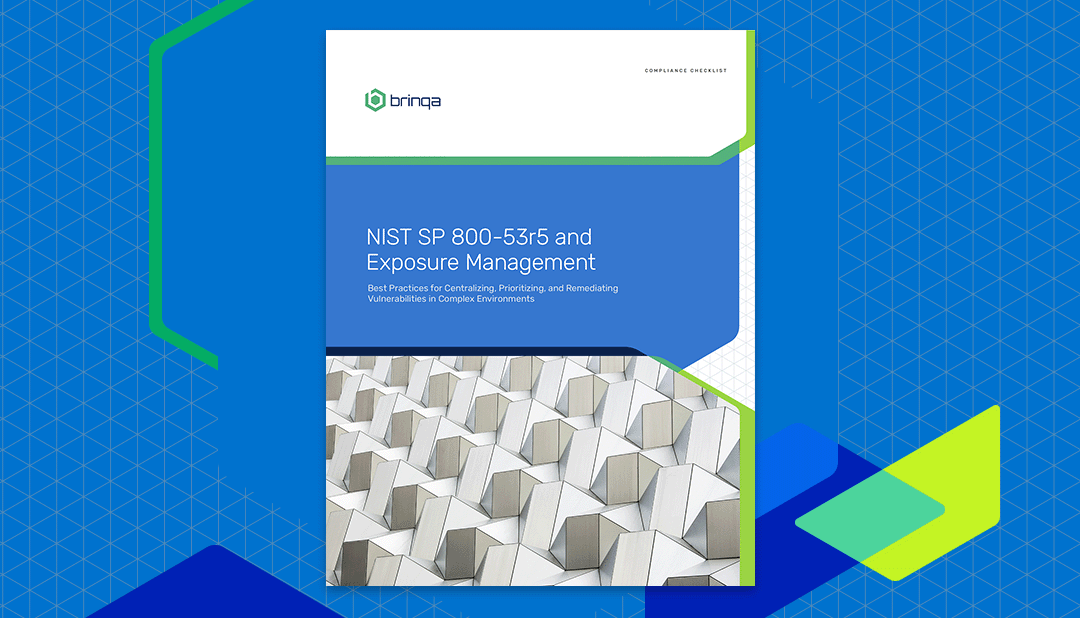
EU Cyber Resilience Act (CRA): How to Prepare for Vulnerability and Exposure Management Requirements

The EU Cyber Resilience Act (CRA) introduces sweeping new security requirements for digital products sold in the European Union. Manufacturers of connected hardware and software — from consumer devices to enterprise platforms — must now meet strict obligations for vulnerability management and secure product design.
Whether you’re a device maker, software provider, or security leader supporting EU-bound products, understanding how CRA Articles 13 and 14 apply to your development and remediation processes is essential.
This post breaks down CRA vulnerability management requirements and includes a practical checklist to help your team prepare.
Download the complete EU CRA Vulnerability and Exposure Management Checklist
What Is the EU Cyber Resilience Act (CRA)?
The EU Cyber Resilience Act (CRA) is a landmark regulation (Regulation 2024/2847) that establishes mandatory cybersecurity requirements for products with digital elements (PDEs) — hardware and software that connect, directly or indirectly, to other devices or networks. The CRA was formally adopted in October 2024 and entered into force in December 2024, with most obligations taking effect by December 2027.
Designed to improve the cybersecurity posture of digital products across the EU single market, the CRA requires manufacturers to embed secure-by-design principles and implement ongoing vulnerability and exposure management practices throughout the entire product lifecycle.
Organizations will also face strict timelines for vulnerability disclosure, technical documentation obligations, and conformity assessments — all backed by substantial financial penalties for non-compliance.
Which Products and Companies Must Comply?
The CRA applies to:
- Manufacturers, importers, distributors, and retailers of digital products sold in the EU.
- All sizes of organizations — from startups to multinational vendors.
- Products including software applications, consumer electronics, industrial devices, and IoT systems.
These rules apply to any organization selling connected products into the European Union, regardless of where the company is headquartered. Exemptions apply to sectors already regulated by specific frameworks (e.g., medical devices, aviation, automotive). All in-scope products must bear the CE marking to demonstrate conformity with CRA cybersecurity requirements.
Starting September 2026, manufacturers must report actively exploited vulnerabilities within 24 hours to ENISA and relevant national CSIRTs.
Key Vulnerability Management Provisions in CRA Articles 13 and 14
Article 13: Secure-by-Design and Default (Annex I, Part I)
The CRA mandates that cybersecurity be built into the design, development, deployment, and post-market processes of PDEs. Software and hardware manufacturers must ensure that products:
- Are secure-by-default and secure-by-design.
- Protect data and communication against unauthorized access.
- Prevent exploitation of known vulnerabilities.
- Ensure integrity, confidentiality, and availability.
- Support secure configuration and restore defaults.
- Provide logs for forensic and incident analysis.
- Enable secure updates (including automated updates, rollback, authenticity checks).
- Minimize attack surfaces (remove unnecessary features).
- Provide clear user documentation on security settings and updates
These measures ensure a cybersecurity risk assessment informs every stage of the product lifecycle.
Article 13: Vulnerability and Lifecycle Management (Annex I, Part II)
Mandatory requirements include:
- Institute vulnerability handling policies.
- Establish a contact point for vulnerability reporting.
- Perform regular tests and audits for vulnerabilities.
- Address known vulnerabilities without delay.
- Notify ENISA and national CSIRTs of actively exploited vulnerabilities within 24 hours of awareness (from Sept 2026).
- Document vulnerability handling activities and lifecycle support periods.
- Supply a Software Bill of Materials (SBOM).
- Continue support and vulnerability remediation throughout the declared support period.
These activities require active vulnerability lifecycle management even after the product is placed on the market.
Article 14: Traceability and Continuous Compliance
To maintain conformity:
- Technical documentation must remain current.
- Changes to design, suppliers, or software must be documented.
- A formal Declaration of Conformity is required.
- CE marking must be applied consistently.
Failure to maintain accurate records can result in fines up to €5 million or 1% of global turnover.
Common Vulnerability Management Challenges Under the CRA
Managing vulnerabilities across a modern digital product stack — including third-party components, cloud-native systems, and CI/CD pipelines — is complex. CRA compliance adds pressure by requiring:
- Real-time visibility into vulnerabilities across applications, infrastructure, and cloud environments
- Integration of threat intelligence to assess exploitability
- Centralized reporting and documentation for audits
- Fast, coordinated response workflows across siloed teams
These requirements can’t be met with spreadsheets or generic patch tracking tools. Organizations need a unified vulnerability and exposure management strategy that goes beyond traditional vulnerability scanners.
CRA Vulnerability and Exposure Management Best Practices
To help security and compliance teams simplify CRA alignment, Brinqa recommends the following best practices, aligned with CRA Articles 13 and 14:
1. Consolidate and Normalize Vulnerability Data
Unify findings across infrastructure, applications, cloud services, and development pipelines. Normalize vulnerability scores across tools and synchronize data dynamically to reflect changes in your attack surface.
Why it matters: Fragmented vulnerability data undermines risk visibility and slows response. Explore best practices for prioritizing vulnerabilities based on exploitability, business context, and risk impact. Centralization supports CE marking and lifecycle conformity documentation.
2. Contextualize Risk with Threat Intelligence
Layer in external threat signals such as:
- EPSS (Exploit Prediction Scoring System)
- CISA KEV (Known Exploited Vulnerabilities)
- VulnCheck and “Exploited in the Wild” datasets
Combine base scores (CVSSv3, EPSS) with business context (e.g., asset criticality, data sensitivity) to create adjusted risk scores tailored to your environment.
CRA Tip: Article 13(4) requires manufacturers to ensure third-party components do not introduce weaknesses — real-time threat intelligence is essential.
3. Automate Remediation Workflows
Use structured workflows that define conditions and triggers — such as when a vulnerability is detected, assigned, patched, or exceeds SLA.
Integrate with ITSM tools like:
- ServiceNow
- Jira
- GitLab
- Azure DevOps
This ensures remediation is efficient, documented, and aligned with CRA disclosure timelines. Read more about automating vulnerability remediation workflows at scale.
CRA Tip: Article 13(5-6) requires timely remediation and comprehensive documentation of all vulnerability handling activities.
4. Build Reporting and Dashboards for Compliance
Generate audit-ready reports that show:
- Remediation effectiveness
- Risk registers by asset, application, or business unit
- Customized scorecards for different stakeholder views
These tools make it easier to demonstrate compliance during audits and to produce documentation for CE marking and Article 14 requirements.
CRA Tip: Article 14 emphasizes the importance of maintaining up-to-date technical and risk documentation across product versions.
Get the Full CRA Vulnerability Management Checklist
Want the complete checklist with mapped CRA Articles 13 and 14 and actionable best practices? Download the full EU CRA and Exposure Management Checklist to align your vulnerability program with Cyber Resilience Act requirements.
Frequently Asked Questions (FAQ)
What is the Cyber Resilience Act (CRA) in the EU?
The CRA is a regulation designed to improve the cybersecurity of digital products sold in the EU by requiring secure-by-design practices, vulnerability handling processes, and full lifecycle security documentation.
Who needs to comply with the CRA?
Any manufacturer, importer, or distributor of connected hardware or software products sold into the EU, with few exemptions (e.g., medical or automotive sectors).
What is the deadline for CRA compliance?
While most obligations take effect in December 2027, vulnerability disclosure requirements start as early as September 2026.
What happens if a company fails to comply?
Penalties range from €5 million to €15 million or 1% to 2.5% of global turnover, depending on the nature of the violation. Manufacturers face the highest fines, while importers and distributors can be fined up to €10 million or 2% of turnover. Regulatory authorities may also impose product recalls or market bans.
What does the CRA require for vulnerability management?
Key requirements include: secure-by-design development, vulnerability disclosure within 24 hours of discovery, SBOM generation, regular audits, and remediation documentation.
How does Brinqa support CRA vulnerability management?
Brinqa enables unified visibility, contextual scoring, workflow automation, and audit-ready reporting — all essential for meeting CRA Articles 13 and 14 efficiently and at scale.
How Brinqa Helps Meet CRA Vulnerability Management Requirements
The Brinqa Vulnerability and Exposure Management Platform, powered by our unique Cyber Risk Graph™, gives manufacturers and software vendors a scalable way to meet CRA security requirements.
Brinqa delivers:
Centralized Visibility
Consolidate vulnerabilities across infrastructure, cloud, and applications — including SBOM data and third-party components — into a single source of truth.
Threat-Aware Risk Prioritization
Automatically enrich vulnerability data with exploit intelligence, risk context, and business impact to highlight what matters most — and demonstrate secure-by-design maturity.
Automated Remediation
Trigger rule-based actions to assign tickets, send alerts, and document patching — with deep integrations to your existing ITSM and development tools.
Audit-Ready Reporting
Generate dashboards and documentation that align with CRA Articles 13–14, support CE marking processes, and track disclosure timelines.
Flexible, Scalable Deployment
Brinqa customizes your implementation to your unique attack surface, compliance needs, and security maturity — far beyond off-the-shelf tools.
Want to see how Brinqa can help your organization streamline CRA compliance? Request a personalized demo of the Brinqa Platform to explore how unified vulnerability management and automated workflows support secure-by-design development and risk reporting at scale.
Related resources




